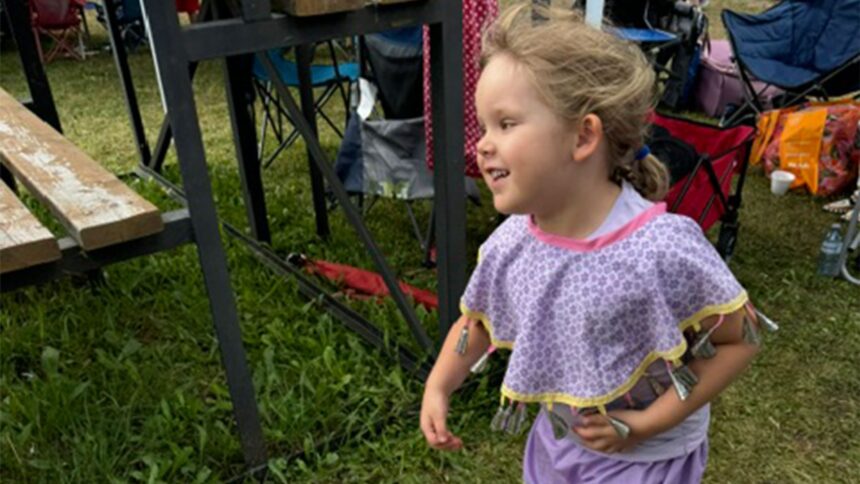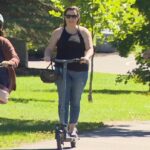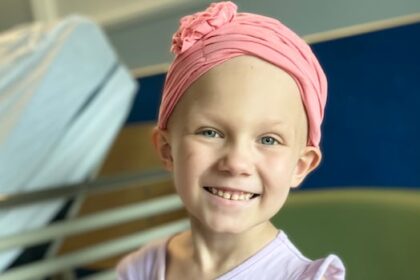Two separate legal rulings in June and July are forcing Indigenous Services Canada (ISC) to revisit funding denials, signaling that the government’s interpretation of Jordan’s Principle is too narrow and it needs to reconsider cases where it has cut some children off services. Cindy Blackstock, executive director of the First Nations Child and Family Caring Society, is urging caregivers whose children were denied to review the reasons they were given and consider re-filing. “ Anybody who got a denial from Canada that mentions the [Charter of Rights and Freedoms], that’s a red flag,” said Blackstock in an interview. “If Canada is saying there’s another program out there that would meet the child’s needs,but it actually isn’t enough to meet the child’s needs — or if they’re saying the service isn’t available to a non-indigenous child – so for that reason they’re gonna deny it, any of those things are red flags.” Parents or caregivers who find themselves in a similar situation to the case of five-year old Scarlet or Joanne Powless should write to ISC, said Blackstock. “ Ask them what process is going to be used by the department to re-review their case in light of that decision? You don’t need a lawyer to do that.” Scarlet’s case Scarlet and her father, Patrick Cully in an undated photo courtesy of the family. Five-year-old Scarlet was born with mobility challenges and was non-verbal. Just before she turned three, she was diagnosed with autism. Her parents, Patrick Cully and Jamie Lynn McInnis, from Batchewana First Nation in northern Ontario, live in Thunder Bay, where they found a therapy program that helped their daughter learn to speak and even sing. Along with speech, Scarlet learned other basic life skills after she enrolled in Applied Behaviour Analysis (ABA) therapy, a specialized form of care that uses positive reinforcement to help autistic children learn daily tasks and reduce harmful behaviours. It costs around $200,000 annually—well beyond the family’s means—but was fully covered by Jordan’s Principle, a federal policy meant to ensure First Nations children receive equitable access to the same health and education services non-Indigenous children receive. Scarlet received a full year of therapy in 2023. In 2024, her parents reapplied for funding to keep her in the program. But, as her parents waited for her letter of approval, ISC was ready to make cuts to Jordan’s Principle funding. Why did ISC narrow the definition of Jordan’s Principle? In late 2024, ISC expressed concerns that program costs were ballooning. The program paid out nearly $1.8 billion in services in 2023–24 and 2024-2025 was shaping up to be even higher, according to the department. Officials warned First Nations chiefs that cuts were imminent. The Canadian Human Rights Tribunal is the quasi-legal body that has been monitoring how Canada funds health and education for First Nations children after finding Canada’s past policies discriminatory. In January, the Tribunal expressed concern that Jordan’s Principle was being used to fund items like modelling headshots, gaming consoles and unlimited furniture purchases, after hearing testimony from ISC officials. The Tribunal acknowledged that some of these may support a child’s well-being, but warned the program was meant to address essential needs. The Tribunal raised concerns that children with urgent health needs were facing delays, partly because the program was being used for requests that stretched beyond its intended scope. In its Jan. 29 ruling, the Tribunal said there is “an immediate need for a shift in Canada’s practice.” The ruling allowed ISC to revisit the scope of eligible services under Jordan’s Principle. In February, newly excluded items included home renovations, sports and international travel not tied to a child’s specific medical needs, and a broad range of non-medical supports such as child care, respite care, furniture, and transportation. The department also scaled back school-related supports, particularly for off-reserve and private institutions. That meant funding for children like Scarlet was in jeopardy. Scarlet’s Letter Scarlet likes to sing, draw and paint. Undated photo courtesy of the family. ISC said it would only fund services that were justified by a professional and if “such funding is required by “substantive equality” in other words, ensuring First Nations children are not discriminated against. Scarlet was one of several children who once qualified for services under Jordan’s Principle but was denied in light of the changes. Cully, her father, received the rejection letter on March 28. The letter, shared with APTN News, said Scarlet’s case did not meet the threshold of “substantive equality” that is used in Jordan’s Principle. In the letter, ISC explained that they are defining “substantive equality” to mean that Scarlet should only qualify for services that would be offered to a non-Indigenous child, and that appeared to be two days a week through a program offered by the province. “ISC is not aware of an existing government service that currently provides funding for full-time ABA therapy in lieu of school-based educational support on behalf of individuals,” the letter stated. “If there is no existing government service, as in this case, substantive equality does not apply.” The core question: Does ending discrimination mean sameness or fairness? David Taylor, a lawyer who read about Scarlet’s story in a news piece, offered to represent the family in an appeal to ISC, and also a judicial review in Federal Court. . “That’s a situation that we’re seeing quite frequently across the country,” Taylor said. “Families that had access to the service losing it, because of how ISC is now approaching Jordan’s Principle.”. The central question before the court was how to interpret “substantive equality” under Jordan’s Principle. ISC argued that non-discrimination means treating First Nations children the same as non-Indigenous children, therefore offering identical services. It added that Jordan’s Principle was not obligated to fund special or ameliorative programs. The opposing view, proposed by Scarlet’s family, was that equality means that ISC must offer services that meet children’s actual needs, even if doing so requires different or additional support. Court says ISC must revisit its decision to cut Scarlet’s therapy The disruption to Scarlet’s therapy came at a critical moment. Scarlet and her mom, Jamie Lynn McInnis. Undated photo courtesy of the family. Scarlet had just turned five, a window when ABA therapy is most effective for children, according to Dr. Ryan Giroux, a Métis General Pediatrician, who gave evidence in the case. Dr. Giroux described it to the court as a stage of “neurodevelopmental plasticity,” when the brain is most responsive to intervention. When Scarlet’s full-time therapy stopped on March 31, it only took a few weeks for her parents to see the impact. She became more anxious, less communicative, and her eating, sleeping and toileting routines deteriorated, they said. Her meltdowns increased from once a week to three a day, according to documents filed in court. Then, something unexpected happened. An anonymous donor stepped in to cover her therapy costs through to the end of the school year. Her therapy providers—Ignite and the George Jeffrey Children’s Centre—chose to apply the donation going forward, rather than collecting on six months of unpaid bills, said Taylor. “ The service provider is really holding the bag in this one, and I have to say it’s really frankly, quite, quite generous in terms of how they’ve approached this,” he added. All that support kept Scarlet enrolled in therapy fulltime. Scarlet’s future is uncertain, but her win may restore services to other children On June 19, Justice Meaghan M. Conroy ruled in Scarlet’s favour. She agreed that “substantive equality” meant children can access a service that will close the gaps created by historical and geographic disadvantages, and that ISC was being too narrow in refusing to fund ameliorative services. “From its inception, the definition of Jordan’s Principle has contemplated filling the gaps in services to First Nation children, including where there is a comparative program that is ameliorative,” Conroy wrote in her decision. “For example, even the narrowest definitions of Jordan’s Principle relied on by Canada included support for children with disabilities. Taylor says this is a case to watch because what happens to Scarlet could determine the fate of an unknown number of cases where children have been denied services. “ If you look at your denial letter, and you see this is denied because the program is an ameliorative program and it says Jordan’s principle isn’t designed to modify ameliorative programs or expand access to them – that’s something that they should be seeking further advice about because that’s the kind of reasoning that was set aside by the court in this case,” Taylor explained. The ruling didn’t reinstate funding outright, but it ordered the department to reassess the case. In July, Conroy issued an order giving ISC two months to reconsider its decision. Scarlet will continue to receive full services during this time, as part of that order. If ISC decides to fund Scarlet full time based on this decision those funds apply to the past school year. That means the service providers who supported her without pay so far will receive compensation.. Her parents will have to go through a new application process for the next school year. ISC responds Indigenous Services Canada Minister Mandy Gull-Masty at cabinet meeting. Photo: Mark Blackburn/APTN. APTN reached out to ISC asking for comment on the case and received the following written statement from Minister Mandy Gull-Masty. “Indigenous Services Canada is aware of the Federal Court’s decision and in the process of assessing it,” the statement said. “We are not in a position to discuss the decision at this time. “Out of respect for the privacy of children and youth receiving products and services through Jordan’s Principle and in compliance with privacy legislation, we cannot provide information about specific requests.” “In general, each Jordan’s Principle request is considered on a case-by-case basis, along with the required documentation for the request, while taking into account the distinct needs and circumstances of the child/children. We remain committed to supporting First Nations children’s equal access to the essential services they need and deserve.” Scarlet’s case isn’t the only one where ISC has had a decision overruled by the courts. Read more: Jordan’s Principle funding cut to autistic child in Thunder Bay Federal Court says Canada acted ‘unreasonably’ in denying request to repair home Mother says son is running out of time while family repeatedly denied by Jordan’s Principle Court: ISC’s response to Oneida Grandmother is “unreasonably narrow.” Joanne Powless, the children’s grandmother, has been trying to get the department to fund mould remediation in their on-reserve home since 2022. Photo: Mark Blackburn/APTN. Taylor also represented Joanne Powless, an Oneida woman. “Joanne Powless, who’s a grandma living on-reserve near London, Ont.,her grandkids have really bad asthma and they live in a house that is contaminated, just like really badly compromised with mould,” Taylor, who is based in Ottawa, said. Since 2022, Powless has been asking the federal government to cover nearly $200,000 in mould remediation and related costs under Jordan’s Principle. ISC repeatedly denied the request, citing the price, despite there being no financial cap under the program. Just weeks after the judge ruled in Scarlet’s case, a decision came down in the Powless case from Justice Ann Marie McDonald. In the July 10 ruling, McDonald ordered ISC to reconsider the request, calling its response “unreasonably narrow.” She said the department wrongly framed the application as a housing renovation instead of a health-related need. “The condition of the home where the children reside is not in dispute and is described as unhabitable and harmful to the health of the children,” McDonald wrote. “There are a series of photographs of the interior of the Powless home depicting the mould on the ceiling and walls, as well as cracks in the foundation and walls. “In my view, ISC took an unreasonably narrow approach to this Jordan’s Principle request by considering the request as a housing renovation request rather than considering the request from the perspective of the health needs of these children. This narrow approach fails to reflect the purpose and intent of Jordan’s Principle.” A third case involving Mary Isaac, a Mi’kmaw woman in Nova Scotia, is slated to l be heard this fall. Isaac was on the brink of losing Jordan’s Principle funding , but is receiving temporary funding through a court order until her case is heard in full. Jordan’s Principle is named for Jordan River Anderson, a child from Norway House Cree Nation in Manitoba, who was born with multiple disabilities. He died on Feb. 2, 2005 after spending his life living in Winnipeg’s children’s hospital. He was deemed fit at the age of two to live in a home appropriate for his medical needs, but instead had to wait while the federal and provincial governments fought over who should pay for his on-reserve, home-based health care. The delay meant Jordan never had the chance to live with his family in their home. He was five when he died. Continue Reading
Children cut from Jordans Principle services under substantive equality should reapply: Caring Society

Leave a Comment










